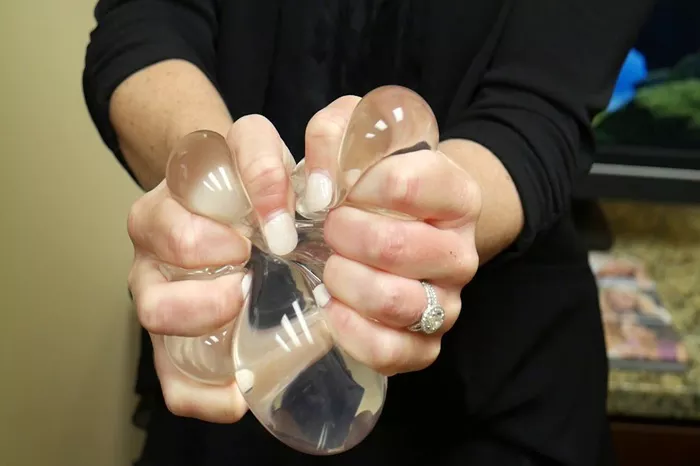Breast augmentation remains one of the most popular cosmetic surgeries worldwide, with millions of women opting for implants to enhance their breast size and shape. As women consider this procedure, one common question often arises: how do breast implants change over time, particularly in terms of their texture and feel?
Understanding Breast Implant Composition
Before delving into the changes implants undergo, it’s crucial to understand their basic composition. Breast implants typically consist of a silicone shell filled with either saline solution or silicone gel. The outer shell is designed to withstand the normal pressures inside the body while maintaining shape and integrity.
Silicone Gel Implants
Silicone gel implants are filled with a cohesive silicone gel that mimics the feel of natural breast tissue. These implants are known for their natural appearance and texture. Over the years, advancements in silicone gel technology have led to more cohesive and form-stable implants that resist leakage and maintain shape.
Saline Implants
Saline implants, on the other hand, are filled with sterile saltwater solution after insertion into the breast pocket. They tend to feel firmer than silicone implants, especially if they are overfilled to achieve a desired size. However, they have the advantage of being adjustable in size during the surgery.
Initial Post-Operative Period
Immediately after breast augmentation surgery, implants often feel firm due to swelling and the body’s natural healing response. This initial firmness is normal and expected, regardless of whether the implants are silicone or saline.
Softening Process
As the healing progresses, the implants typically begin to soften. This softening occurs as the surrounding tissues accommodate the implants and the inflammatory response subsides. Silicone gel implants, in particular, tend to feel more natural and softer over time as they settle into the breast pocket and the gel distributes evenly within the shell.
Long-Term Changes in Implant Texture
Beyond the initial healing period, the long-term texture of breast implants can vary depending on several factors:
Capsular Contracture
Capsular contracture is a complication where scar tissue (capsule) forms around the implant and contracts, potentially causing the breast to feel firm or even distorted. While advancements in surgical techniques and implant materials have reduced the incidence of severe capsular contracture, it remains a possibility that can affect implant texture over time.
Implant Position
The position of the implant within the breast pocket can also influence its feel. Submuscular placement (under the chest muscle) tends to provide more natural coverage and movement, contributing to a softer feel compared to subglandular placement (under the breast tissue but above the muscle).
Implant Type and Quality
The quality and type of implant chosen can significantly impact long-term texture. High-quality silicone gel implants from reputable manufacturers are designed to maintain their softness and shape integrity over many years. Regular follow-up visits with a plastic surgeon are crucial to monitor the condition of the implants and detect any changes in texture early.
See also: What Do breast implants say about a woman?
Factors Affecting Longevity and Texture
Several lifestyle and health factors can affect how breast implants feel over time:
Aging
As the body ages, natural changes in breast tissue and skin elasticity occur. While breast implants themselves do not age in the traditional sense, these changes can influence how they interact with the surrounding tissues. Maintaining overall breast health through regular self-examinations and screenings is essential for women with implants.
Pregnancy and Breastfeeding
Pregnancy and breastfeeding can cause temporary changes in breast size and shape, potentially affecting how implants feel. However, modern implants are designed to withstand these changes without significant alterations in texture or appearance.
Weight Fluctuations
Significant weight gain or loss can affect the appearance and feel of breast implants. Maintaining a stable weight within a healthy range is recommended to minimize potential changes in implant texture.
Surgical Considerations for Long-Term Satisfaction
Choosing a skilled and experienced plastic surgeon is critical for achieving optimal long-term results and satisfaction with breast implants. Surgeons who specialize in breast augmentation understand how to select the right implants based on each patient’s unique anatomy and aesthetic goals.
Follow-Up Care
Regular follow-up appointments with a plastic surgeon are essential after breast augmentation. These visits allow for monitoring of implant texture, early detection of any issues such as capsular contracture, and discussion of any concerns the patient may have.
Conclusion
In conclusion, while breast implants do undergo initial firmness after surgery, they generally soften over time as they settle into the breast pocket and the body adjusts to their presence. High-quality silicone gel implants are known for their natural feel and durability, maintaining softness and shape integrity over many years. Factors such as capsular contracture, implant position, and lifestyle choices can influence long-term implant texture. By choosing a reputable surgeon and following recommended post-operative care guidelines, women can achieve satisfying and natural-feeling results from breast augmentation surgery.
Related topics:
How long Do breast implants last saline?
How much Does a breast implant replacement cost?
When were breast implants invented?


